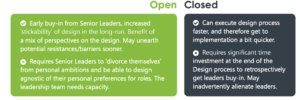
As a new leader, the initial months are crucial for long-term success. Whether inheriting an existing team or starting from scratch, be honest about the organisation’s challenges and seek diverse perspectives. Create a clear operating model, design a bold yet realistic leadership team, and prioritise continuous organisation design to ensure sustained progress towards strategic objectives.
Reading time: 3 minutes
You’ve finally landed the top spot. It’s time to put everything you know into practice, without breaking stride, and you know the first months are where you need to lay the foundations for long-term success in the future.
It’s a big task, and it’s complicated. Perhaps you have legacy teams, an inherited structure, perhaps individuals within your team who have been at the organisation significantly longer than you have. Perhaps you have a blank slate and can start from scratch. Whether you have been promoted from within your organisation, vs been hired externally, here’s some guidance to help you lay strong foundations to set you and your organisation up for success.
 INSIGHT: This is potentially easier if you have been recruited from within, as you’ll likely have an informed view of the nuts and bolts of the organisation. If you’re new to the organisation, getting to know what makes the organisation tick, who the players are, and understanding the root cause of the challenges takes a little longer.
INSIGHT: This is potentially easier if you have been recruited from within, as you’ll likely have an informed view of the nuts and bolts of the organisation. If you’re new to the organisation, getting to know what makes the organisation tick, who the players are, and understanding the root cause of the challenges takes a little longer.

ACTION: Seek different perspectives (from within and outside the organisation) that challenge your own thinking. Remember, those who shout the loudest don’t necessarily have the right answers.

INSIGHT: Be ruthless in your assessment of what exists (roles, teams etc) today, and carefully scrutinise whether or not those existing teams and roles get the organisation closer to your strategic objectives.

ACTION: Once you’ve got an operating model, design structural options based on the work – not on individuals or current roles.
A balance of having a clear vision, whilst also being open to alternate routes to getting there is key.

ACTION: Decide whether you run an open vs closed process, and to what degree you want to (or can) get your team involved in designing the new team.

 INSIGHT: By not taking time out to routinely review your organisation or function’s organisation design is that organisational issues quickly start to have a damaging impact on business performance and employee engagement.
INSIGHT: By not taking time out to routinely review your organisation or function’s organisation design is that organisational issues quickly start to have a damaging impact on business performance and employee engagement.

ACTION: To avoid stalemate, re-establish continuous organisation design as a way of being, and key to good organisational health. Carve out time quarterly to re-assess progress against your strategy, and on at least an annual basis, revisit your strategy in combination with your operating model and org design to make sure you’re leading in the right direction
Interested in this topic or want to get in touch? Visit our Organisation Development and Culture page to learn more.

